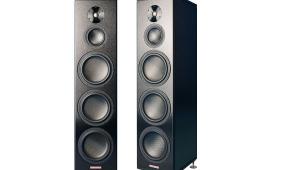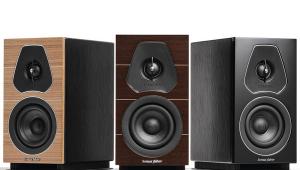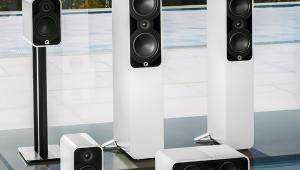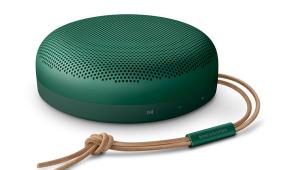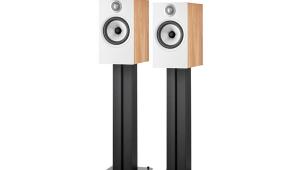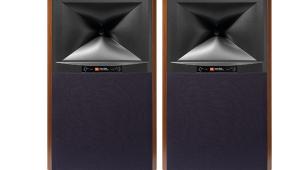Sonus faber Lumina II
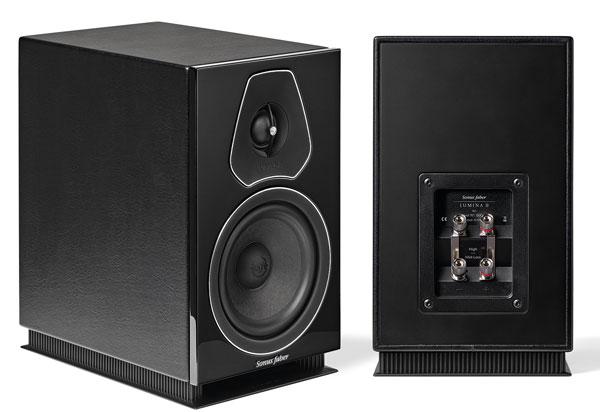
 When the Lumina range launched last year, it was a fairly compact affair, comprising the Lumina III floorstander (HFC 469) and the Lumina I standmount (HFC 479) together with a matching centre speaker. The missing numeral between the two speakers suggested that there might be more members of the family in the works and, sure enough, here is the Lumina II to fill that numerical gap and broaden the range.
When the Lumina range launched last year, it was a fairly compact affair, comprising the Lumina III floorstander (HFC 469) and the Lumina I standmount (HFC 479) together with a matching centre speaker. The missing numeral between the two speakers suggested that there might be more members of the family in the works and, sure enough, here is the Lumina II to fill that numerical gap and broaden the range.
The Lumina II is a two-way standmount that shares a fair amount of design thinking with the Lumina I. This is no bad thing as its shown itself to be a very entertaining little speaker with a great deal more shove and extension than you might reasonably expect from a cabinet that small. The Lumina II effectively takes the same basic ingredients, but makes them more conventionally sized. At the same time, the price only rises by £199 which makes the bigger speaker look rather better value; although priced at the same point as some very talented opposition.
This means that it uses the same 29mm soft dome tweeter as the rest of the range and indeed the Sonetto range above it. Key to how this functions is the framework that Sonus faber calls Damped Apex Dome (DAD) that extends over the dome itself. The company says that this helps to control the break-up characteristics of the dome and improves dispersion. The tweeter itself is mounted in a shallow waveguide to further help with distortion. As with many modern designs, this tweeter is responsible for a huge proportion of the frequency response, with the crossover being set at 1.8kHz.
This hands over to a 150mm mid/bass driver, which looks to have more in common with the bass drivers of the Lumina III – which are bespoke to the Lumina – than the midrange unit, which is also shared with the Sonetto. This means it’s doped paper with a conventional dust cap that works on the same principles as the Lumina I in that it’s aided in its operation by a large, front-mounted slot port sited in the integrated plinth at the base of the cabinet. Being front-firing, it means that the Lumina II is less affected by proximity to walls, while the relatively large port aperture should keep noise levels low. Like other members of the Lumina range and relatively unusually in 2021, the Lumina has two sets of terminals for bi-wiring should you wish.
Aesthetically, the Lumina II uses the same design principles as the rest of the range and the manner in which the company has worked to make a speaker with flat sides so it still feels like a Sonus faber is something that continues to impress me. The decision not to use a veneer on the bulk of the cabinet and go for a leather wrap makes this change feel more deliberate and less like a (completely necessary) need to reduce the complexity and cost of the most affordable range. In turn, the concentration of attention on the front panel helps it feel a little more special at the same time.
Something I didn’t expect is that, unlike the previous Lumina I and III, the review sample has the gloss black front panel. I’d assumed this to be the poor relation of the three finishes available (the others being wenge and walnut), but that’s really not the case. It leaves the Lumina II looking understated but handsome and, thanks to the same thin chrome strips around the mid/bass driver and tweeter mounts, it avoids looking dull too. Build quality is extremely good, with both the mechanical and aesthetic areas feeling solid and carefully assembled.
Sound quality
On paper, the Lumina II doesn’t look like a massive step forward over the Lumina I. Sonus faber claims an
extra 10Hz of low-end response and marginally improved sensitivity – which does seem to be the case in practise – and the same 4ohm impedance as the rest of the range. Such is the wholly unexpected clout that the Lumina I possesses, the Lumina II doesn’t feel significantly more weighty in general listening but there’s meaningful extension below 50Hz in my room, which goes a long way to creating a believable weight and scale to the performance. It’s not significantly more than its little brother but it is noticeable.
Where the big differences really make themselves felt is further up the frequency response. Enjoying the 24-bit/48kHz Qobuz stream of Moby’s Reprise, the Lumina II creates a soundstage that gives the stunning rework of Extreme Ways the space it needs to become a believable performance. With Moby’s vocals never being anything other than the focus of attention, there is space for the orchestration behind him to open up and fill the soundstage. This is a beautifully three-dimensional speaker as there is very little perception of cabinet colouration or even cabinet presence.
It’s still very much a Sonus faber too. The tonal realism and richness is in keeping with the other Luminas and the brand as a whole. The magnificent 24-bit/96kHz FLAC of Disappear by Emily Barker And The Red Clay Halo is a deliberately congested recording, but the Lumina II does a fine job of unpicking it and ensuring that the supporting strings and harmonica all have an accurate and compelling voice of their own. Over the top of all it, Barker herself sounds glorious, the emotion and at times fury of her lyrics framed perfectly within this tonal richness. Across a wide spread of vocal and instrumental styles, the Lumina II doesn’t put a foot wrong.
No less welcome is that, like the other members of the Lumina range, this is a more propulsive and entertaining speaker than you might expect (although, not for the first time, I’m compelled to point out that Sonus faber’s reputation for being ‘a bit pipe and slippers’ is more to do with people looking at its products and assuming they sound like they look). In part this is down to that clever porting arrangement. The Lumina II moves a surprising amount of air very quietly, which means that a nostalgic blast through Leftfield’s Open Up is an energetic, head nodding and thoroughly engaging experience. There are similarly priced rivals that go deeper and hit harder, but the Lumina II manages to hold its own.
In fact, the biggest challenger to the Sonus faber isn’t from other companies but from its own ridiculously precocious little brother. The Lumina I subverts expectations so effectively as to what you think it’s going to do that, when you get to the Lumina II – which behaves perhaps more in keeping with what you might expect from a speaker this size and shape – it can momentarily feel a little ‘normal.’ I think it’s only fair to point out that the Lumina I I’d previously reviewed had departed before the Lumina II turned up and comparison was only possible revisiting material and looking through my listening notes. I suspect that a more rigorous side by side would see the bigger speaker start to eke out advantages that audio memory alone doesn’t note.
Conclusion
And the longer you listen, the more sense the Lumina II makes. Where specific rivals will best it in specific areas, when you judge the Sonus faber across a really varied selection of different music, it quite literally doesn’t miss a beat. It might lack the joy that the sheer improbability of the Lumina I’s performance can deliver but, as a £1,000 all-rounder, the Lumina II is a hugely compelling speaker likely to win many converts to the Sonus faber brand. ES
DETAILS
Product: Sonus faber Lumina II
Type: 2-way standmount loudspeaker
FEATURES
● 29mm silk dome tweeter
● 1x 150mm pulped paper midbass driver
● Quoted sensitivity: 86dB/1W/1m
 |
Inside this month's issue:
Q Acoustics 3020c standmount loudspeakers, Perlisten R10s active subwoofer, Quad 33 and 303 pre/power amps, Acoustic Solid Vintage Full Exclusive turntable, newcomer Fell Audio Fell Amp and Fell Disc and lots, lots more...
|






